It's great to see more healthcare organizations embracing the philosophy and methodologies of kaizen (as we documented in Healthcare Kaizen). I saw some posters and presentations at the recent Society for Health Systems conference that included some nice examples of this approach from organizations including the Indianapolis VA, East Tennessee Children's Hospital, and Norwalk Hospital…
Indy VA
The Indianapolis VA gave a talk on their adoption of daily huddles and Lean management. They emphasize to their staff that “every improvement is good, either big or small.” Instead of one million-dollar idea, they are happy with a million $1 ideas.
They visited ThedaCare and have adopted and adapted many of their methods, including the huddles, “PICK charts,” “stat sheets,” and A3 problem solving sheets.
Their “huddle boards” are a bit different than the Idea Boards we shared in our book (and shared by our readers).
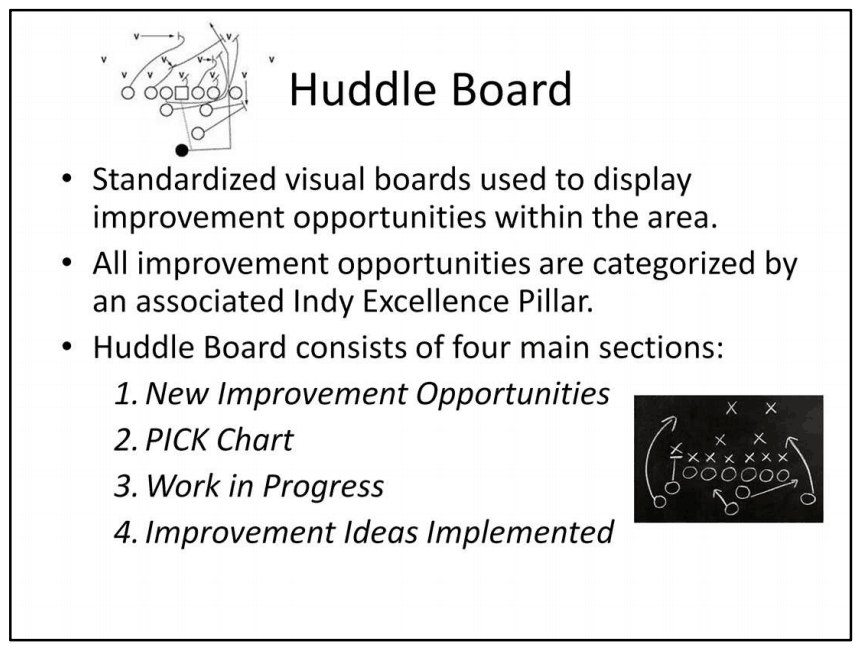
The picture of the board is a bit obscured by their version of an Idea Card (get our template here).
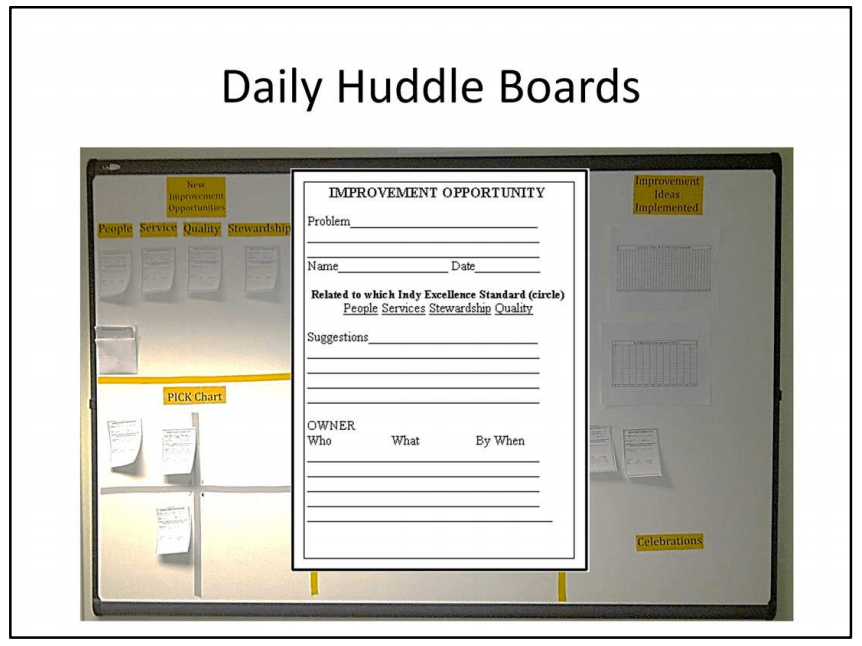
Here is a picture of the board and their process:
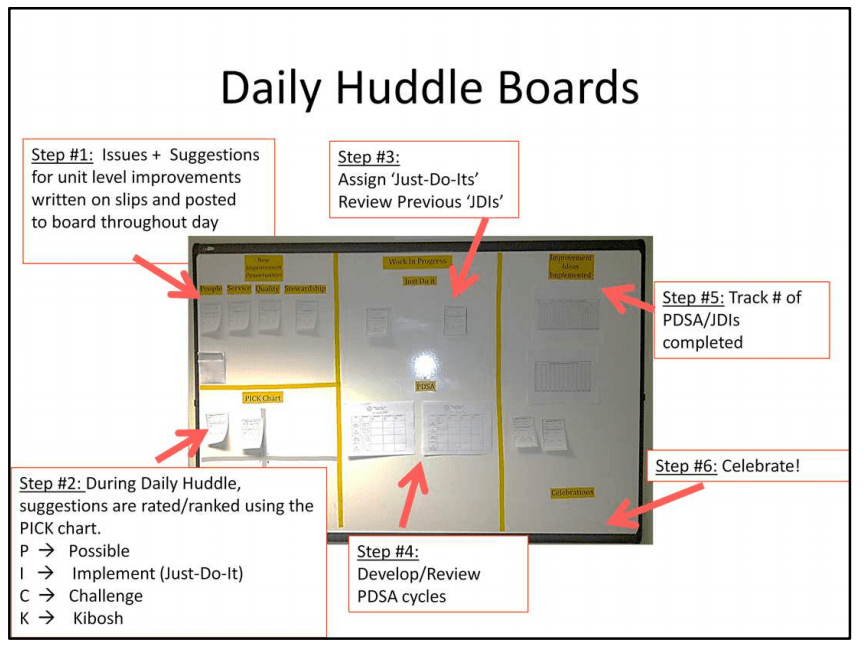
The Indy VA emphasized:
- Small, easy improvements that don't take a lot of time.
- Following the PDSA process, where the “A” stands for either Adopted, Abandoned, or Adapted
East Tennessee Children's Hospital
Their work, as shared by Isaac Mitchell, was the direct result of my 2012 presentation about Healthcare Kaizen at SHS. They have shared some examples of their improvement work and method on our book's website. See a larger picture of their Visual Idea Board and some examples of Kaizen improvements:
Here is their poster presentation from SHS (click for a larger view):
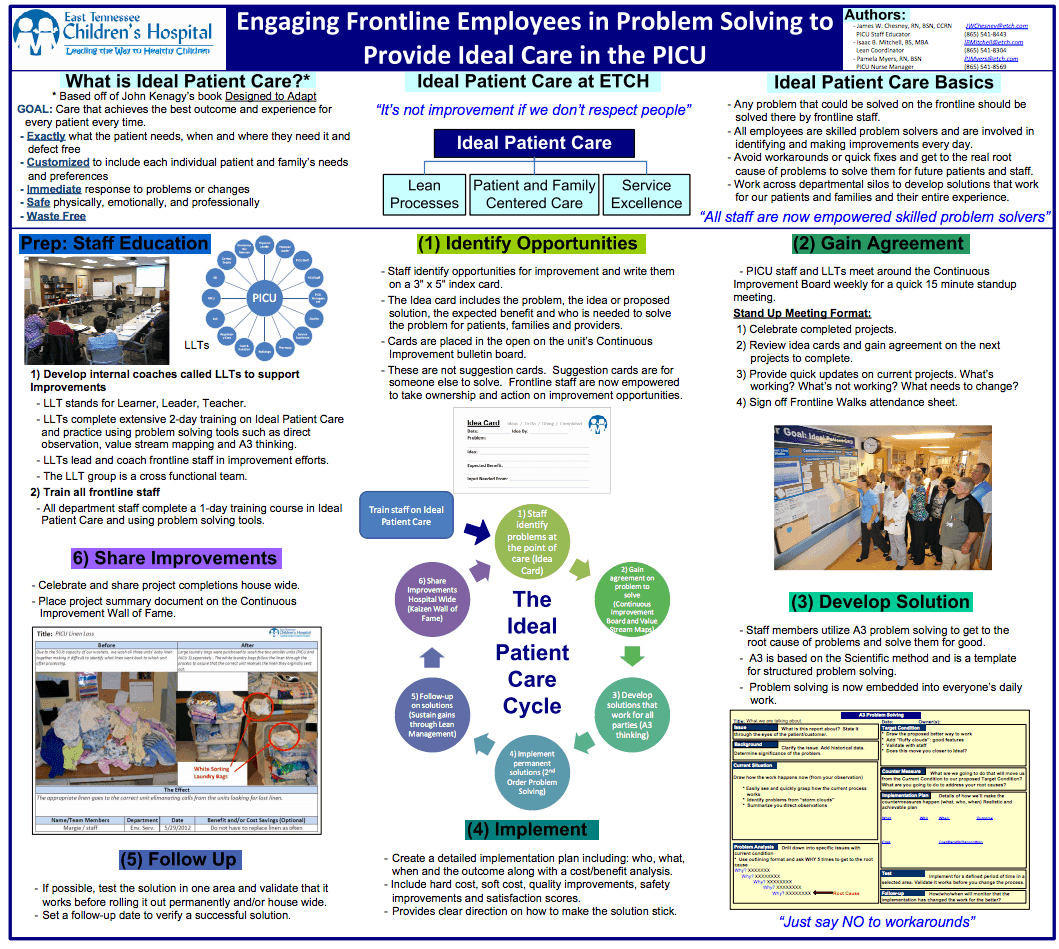
They are combining Kaizen and A3 problem solving – it's all PDSA. The goal of “ideal patient care” is exactly what we should all be working on.
Some pictures I took of parts of the poster:
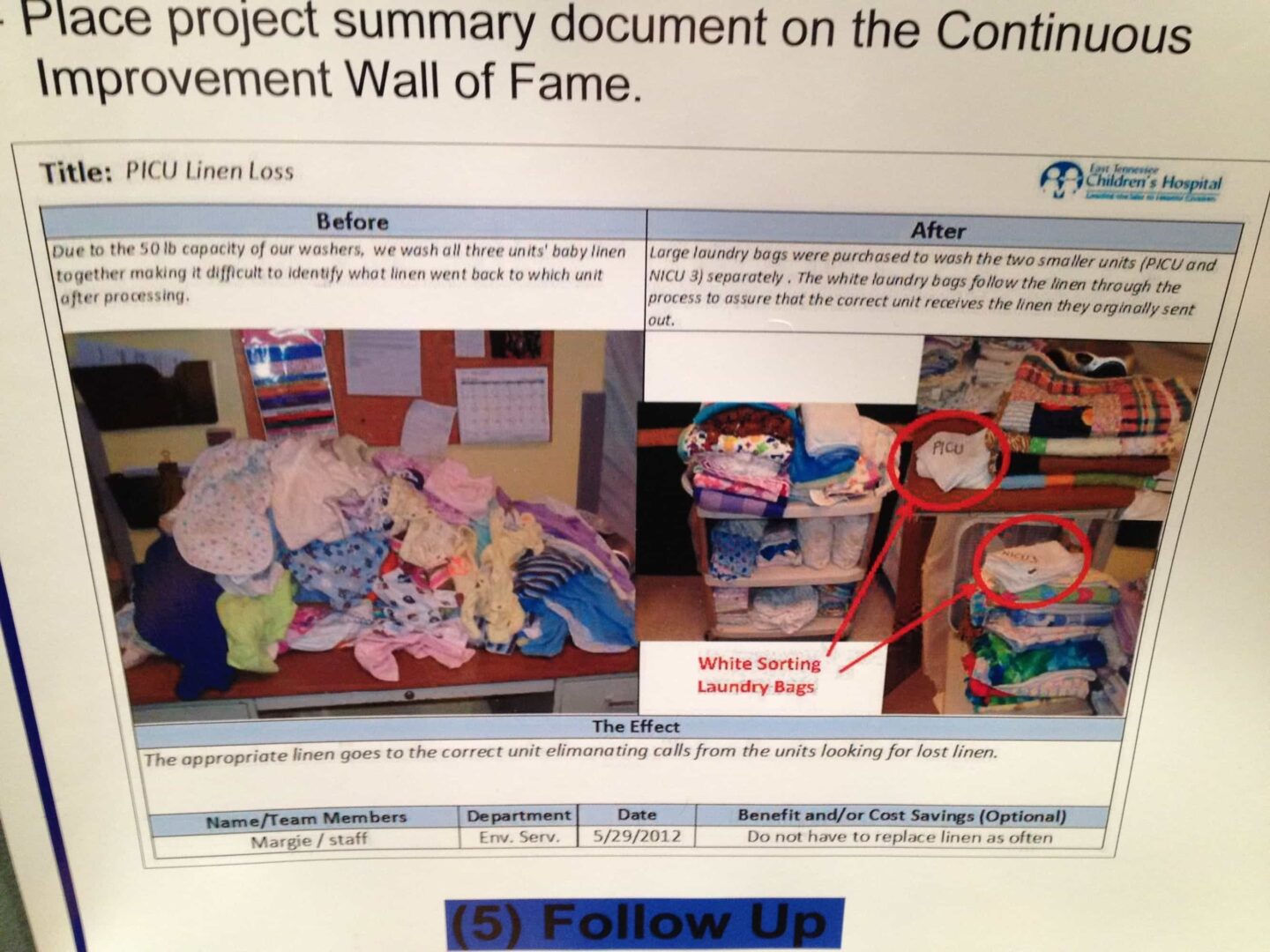
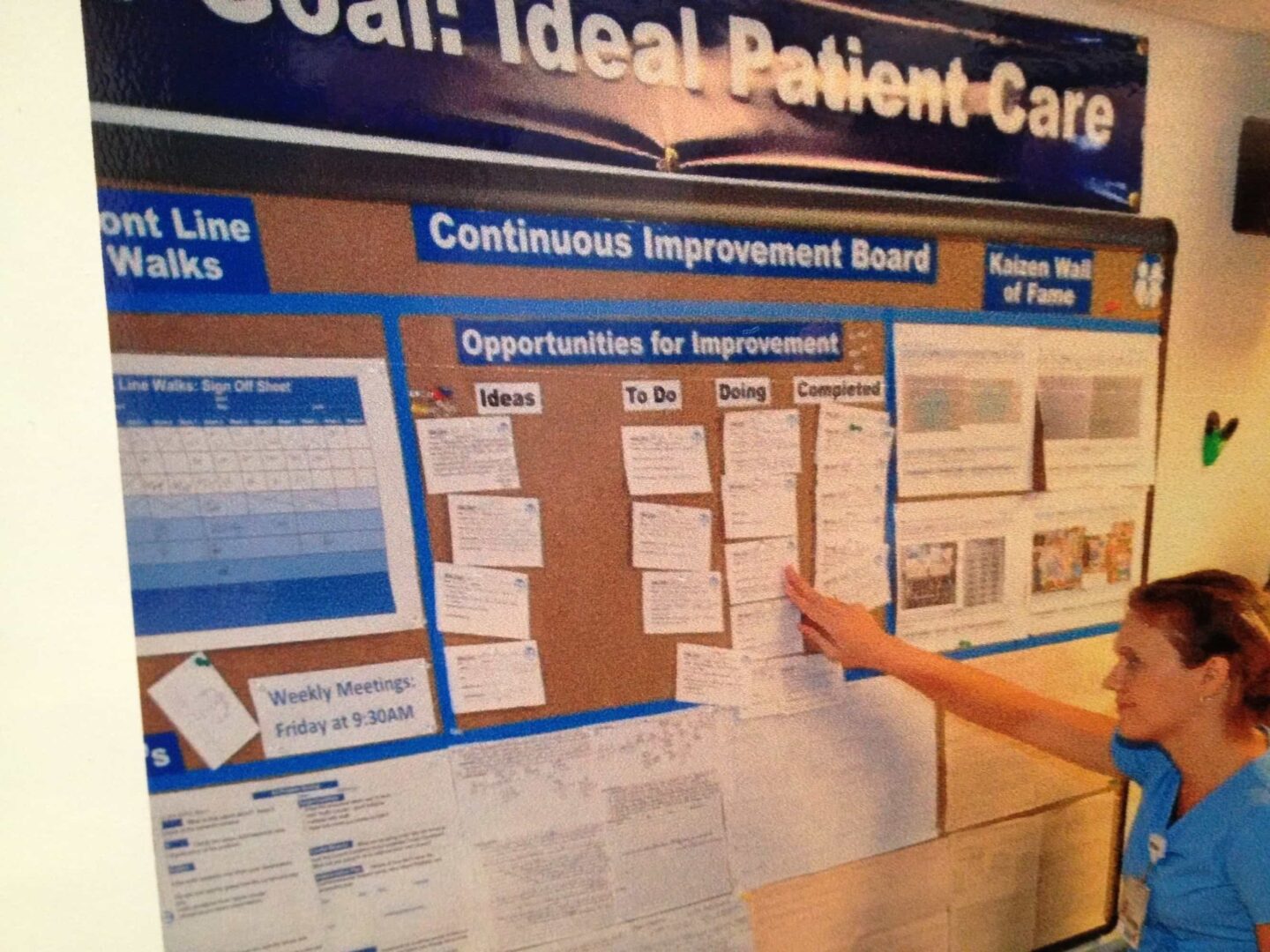
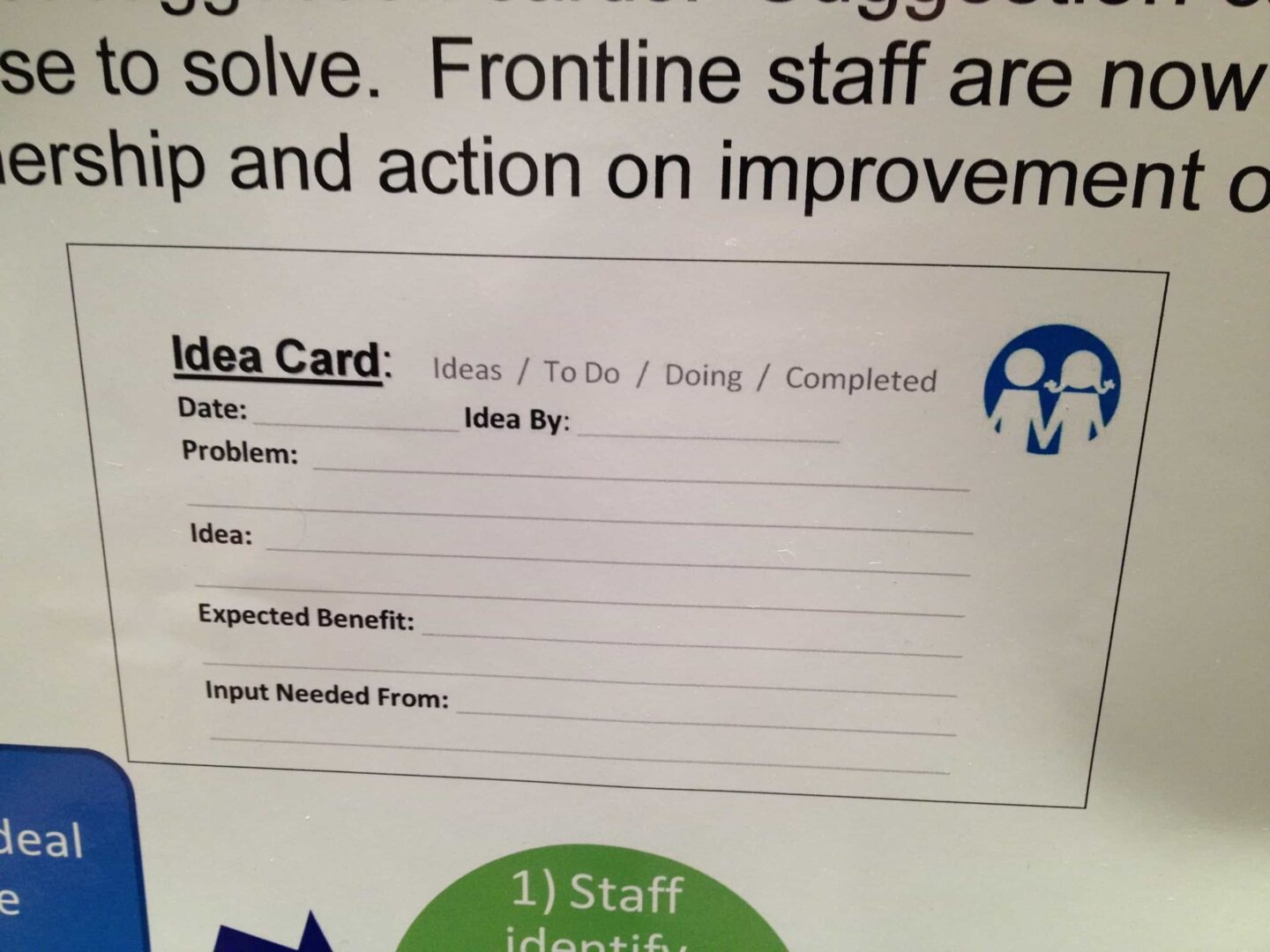
Norwalk Hospital
I wasn't able, unfortunately, to speak to the people behind this poster:
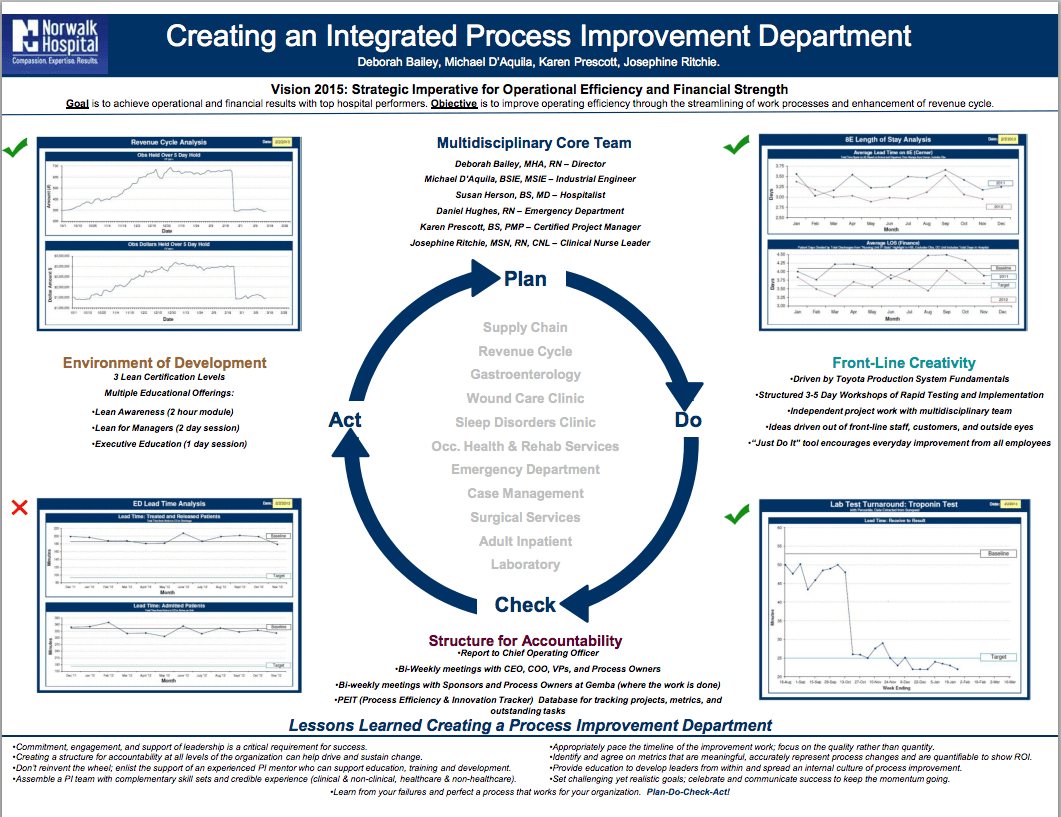
Again, you see the PDCA cycle front and center. The hospital appears to be using formal “Kaizen Events,” but they are also engaging front-line staff in ongoing Kaizen, it appears… everyday improvement from all employees. That's Kaizen!
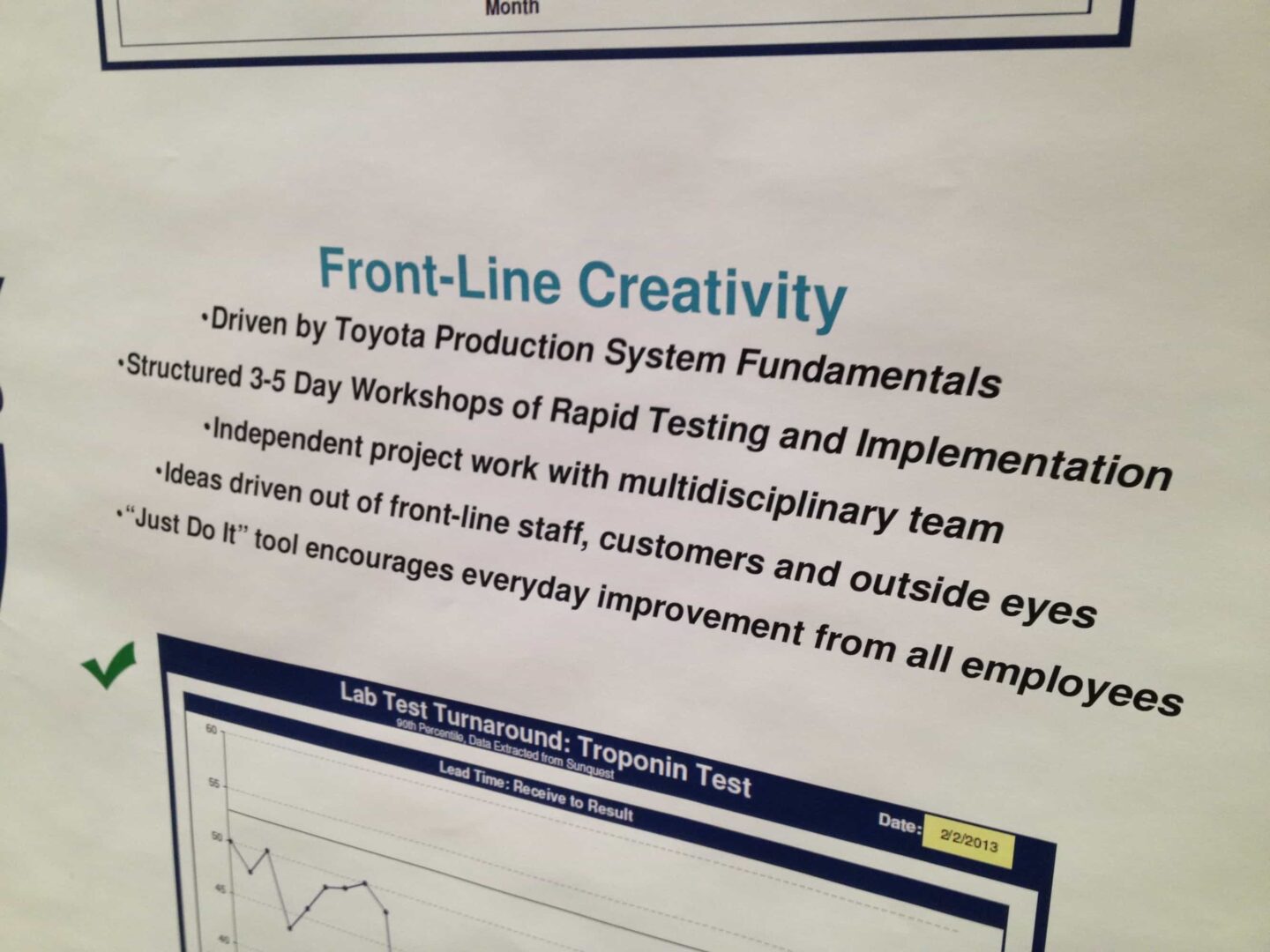
Is this happening in your organization?
If you have Kaizen examples to share, you can do so via this page on our book's website (you can follow the lead of East Tennessee Children's Hospital).
What do you think? Please scroll down (or click) to post a comment. Or please share the post with your thoughts on LinkedIn – and follow me or connect with me there.
Did you like this post? Make sure you don't miss a post or podcast — Subscribe to get notified about posts via email daily or weekly.
Check out my latest book, The Mistakes That Make Us: Cultivating a Culture of Learning and Innovation:



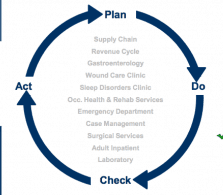







Hi Mark
Quick question for you if I may. I am very interested in Lean and Six Sigma – I work in IT services. I am mid career and am looking at these to improve my own departments performance and profitability – I also am looking at career advancement and having studied these for sure would help me in this respect.
Any advise on the direction…focus on a course in Lean with an emphasis on Process and Services…then complete a SSGB..or I see some course have Lean SSGB or some have Lean SS…what to choose? Does a Lean SSGB have enough in there about Lean and Services? It’s a tad befalling – I don’t just want a resume filler – I want to learn and utilize the information and training.
Appreciate your response.
Kind Regards
That’s a quick question, but there’s no easy, quick answer.
If you’re interested in Lean, I’d suggest staying away from Belt programs and so-called “Lean Sigma.” It seems these programs are mostly Six Sigma with a bit of superficial Lean content.
If you want to learn… read books, watch YouTube videos on Lean… and then, like you said, try putting it into practice.
You could also check out the online Lean training at Gemba Academy.
Thanks for this post Mark – I am trying to bring the concepts onto my team here in DC after a recent move from Seattle. Although I am a great PM and have worked in health care IT and even startups for years but I have never actually worked on a team using them before so what would you suggest as the first step (other then buying your book of course)?
fyi – not everyone has a website but without one I couldn’t post. ;-(
Hi Sherry – The website URL isn’t required, but it looks like it throws a red “warning” border at you as if it’s required… but it did let you comment without entering a website/URL. I’ll see if I can fix that. A Kaizen opportunity!
A first step with the Kaizen concepts… I think one important thing is the area manager/leader acknowledging each problem/idea and talking to the person who had the idea (and the team, if needed) VERY quickly… within a day. Things can’t be left to fester in the “New Ideas” column of the board. I will also follow up via email.
Hi Mark,
Just one question: as you wrote above: “They are combining Kaizen and A3 problem solving – it’s all PDSA.”
Can you tell me, when should we use Kaizen or A3?
Or can we do what East Tennessee Children’s Hospital did: A3 format is to implement and kaizen format is to share.
Thanks!
Hi Karina – y’all can do whatever you like (whatever works). What East Tennessee Children’s Hospital does (I believe) is to have ideas some in on those small cards on the boards, as shown above.
What I’ve seen work well is to use the Kaizen board (visual idea board) as a way of submitting problems and/or ideas. If the team members and/or leader realize or decide that a problem is somewhat complex, you might then do an A3.
Usually, a majority of Kaizens are relatively simple “just do its” (Plan-Do-Study-Adjust) and we don’t need the formality and time commitment of an A3 (and sometimes we don’t need root cause analysis and all of that).
Does that help?
Yes! Thank you =)
[…] Kaizen & Idea Boards Spotted at Society for Health Systems Conference (3,305) […]
[…] Kaizen & Idea Boards Spotted at Society for Health Systems Conference (3949 views) […]
Any tips on empowering employees to organize bulletin boards all over the facility
It’s all about leadership… check out this webinar that I did:
Leadership Behaviors that Create a Culture of Continuous Improvement
I hope that helps.
[…] Kaizen & Idea Boards Spotted at Society for Health Systems Conference (3241) […]
Hi Mark Graban,
Thanks for this post, I have one question, in the above concept East Tennessee Children’s Hospital management are combining Kaizen and A3 problem solving for the goal of “ideal patient care”,here my question is so instead of A3 problem solving if we use 5s concept will get better result than that process..?
Hi – I’m confused by the question. A3 is a problem solving method. 5S is not.
There’s no need to make a choice of A3 or 5S. You can do both.